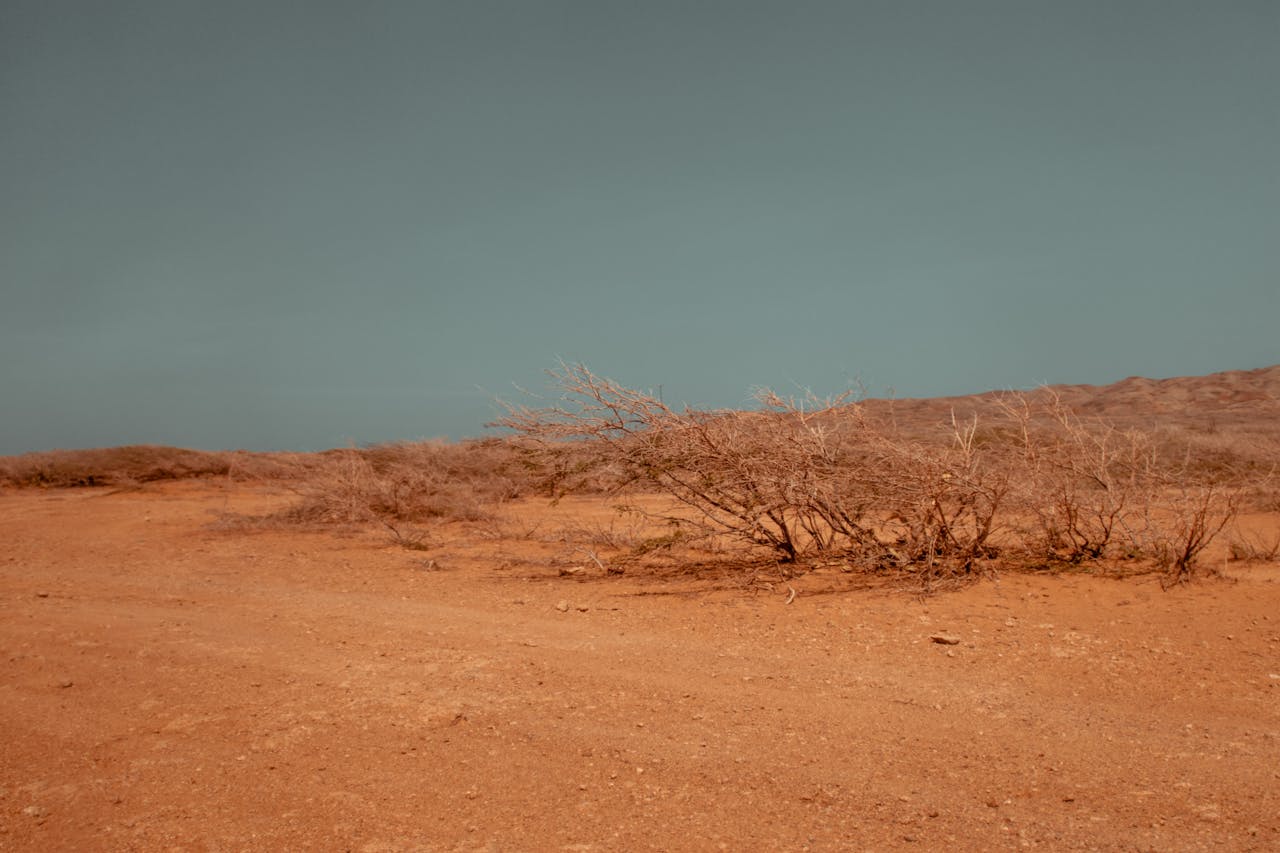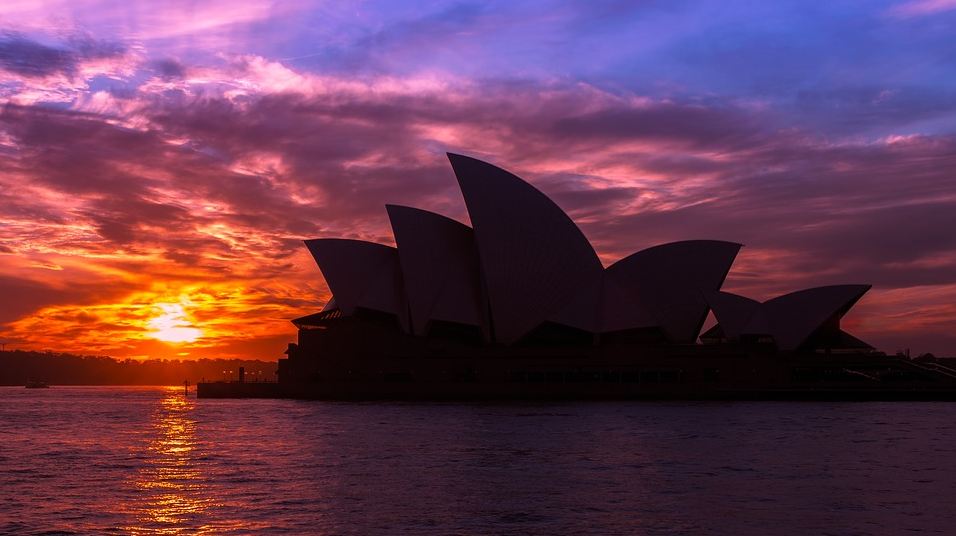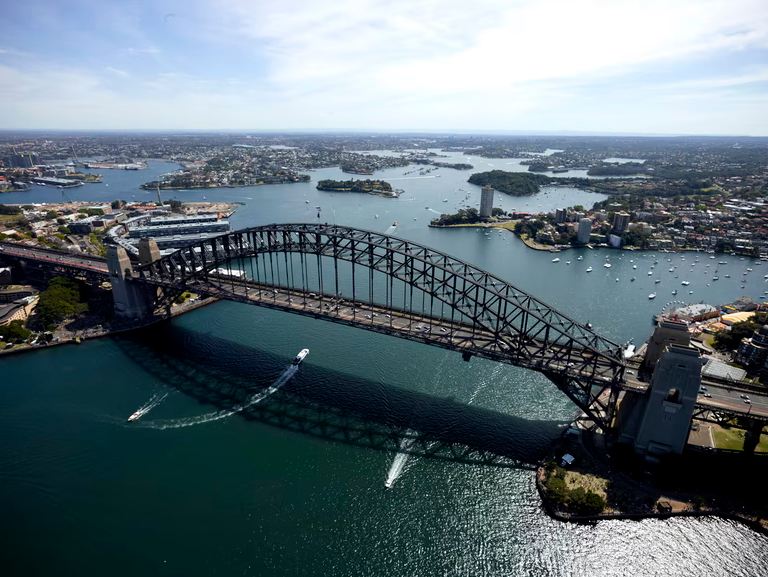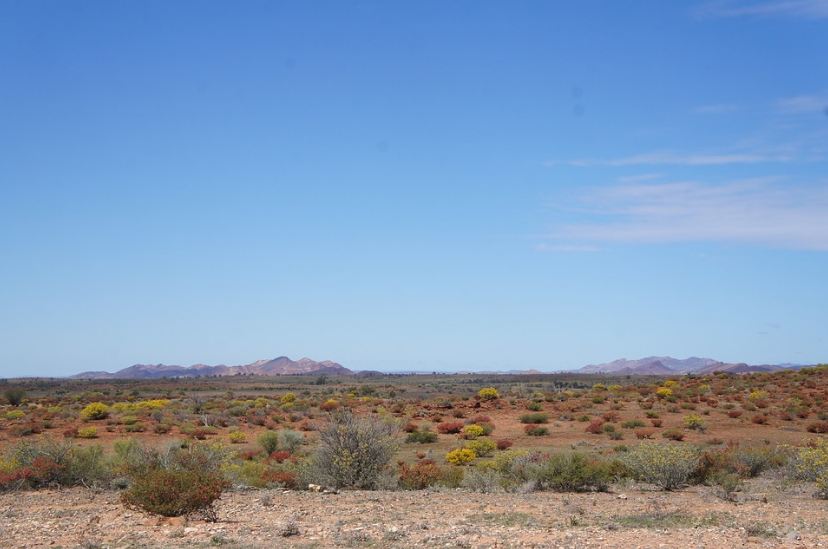How Cold Does It Get in Australia? Winter Temperatures Explained
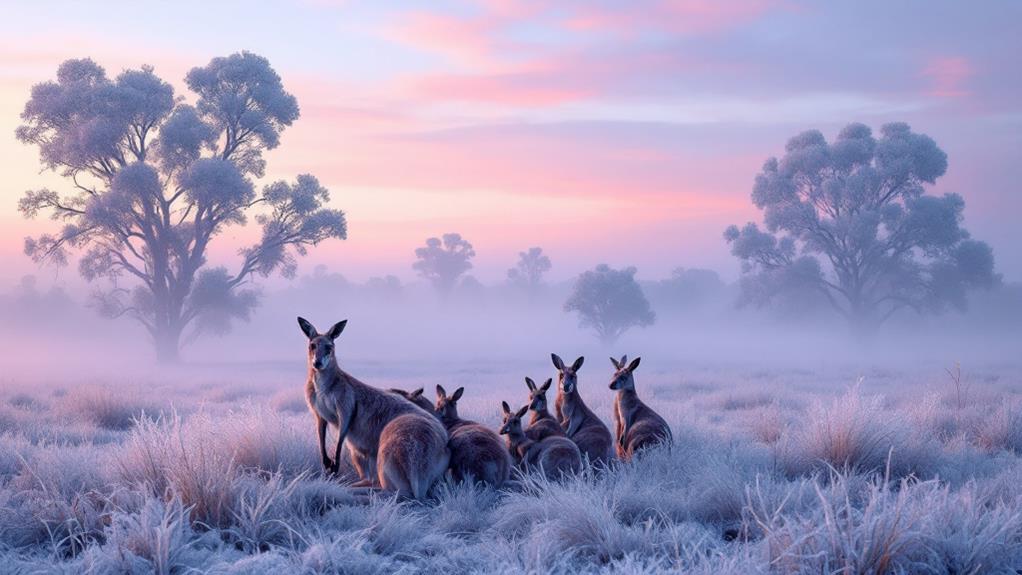
Winter in Australia might surprise you with its chilly range. In the southern coastal areas like Sydney, you'll experience milder days with lows around 8°C. However, if you're in the southeastern regions such as Cooma, it can plunge to a frigid -9°C. Tasmania often sees the coldest temperatures, dropping to -14°C, especially in places like Liawenee. Even northern regions maintain a warmer vibe, with temperatures staying comfortably between 20-30°C. Each region offers its unique winter charm, and as you investigate the specifics, you'll uncover Australia's diverse cold-weather stories.
Winter Months in Australia
Winter in Australia is a season of contrasts and extremes. From June to August, you'll experience diverse weather patterns across the country. July is typically the coldest month, and while the southern coastal regions like Sydney enjoy milder winter temperatures, with minimums around 10.0°C (50.0°F) and maximums reaching 18.3°C (64.9°F), other areas tell a different story.
In southeastern Australia, towns like Cooma in New South Wales can drop to chilling temperatures of -9.4°C (15°F). Tasmania often records the coldest winter temperatures in Australia, with places like Liawenee hitting lows of -14.2°C (6.4°F). These regions highlight the stark contrast within the country's winter climate.
In central and western parts of Australia, the weather takes another turn. You might encounter daytime extremes with temperatures soaring up to 34°C (93°F). However, don't be fooled by the daytime warmth; desert regions can experience dramatic nighttime drops to -26°C (-15°F). This variation showcases how Australia's winter weather patterns create a unique blend of climates, from mild southern coastal warmth to harsh inland cold. It's a winter experience like no other.
Regional Climate Differences
Across Australia, regional climate differences are striking, with each area offering its own unique weather patterns. In Australia's winter, coastal areas like Sydney enjoy milder weather, with temperatures often around a mean minimum of 8.1°C. Compare this to the colder inland regions, such as Cooma in New South Wales, where temperatures can drop to -9°C (15°F). You'll find that the southeast generally experiences the coldest winters, though not the absolute coldest places.
Meanwhile, the tropical north, including regions like Darwin, offers a stark contrast with warm winter temperatures hovering between 20-30°C (68-86°F). This highlights how diverse the country's climate can be. If you explore central and western regions, you'll encounter another set of extremes. Some desert areas experience nighttime lows as frigid as -32°C (-26°F), showcasing the vast range of temperatures often found across Australia.
In Victoria, Melbourne's winter temperatures range from a maximum of 15.6°C (60.1°F) to a minimum of 6.7°C (44.1°F), illustrating the variability within a single state. Understanding these regional climate differences helps you prepare for whatever winter weather Australia throws your way.
Coldest Places in Australia
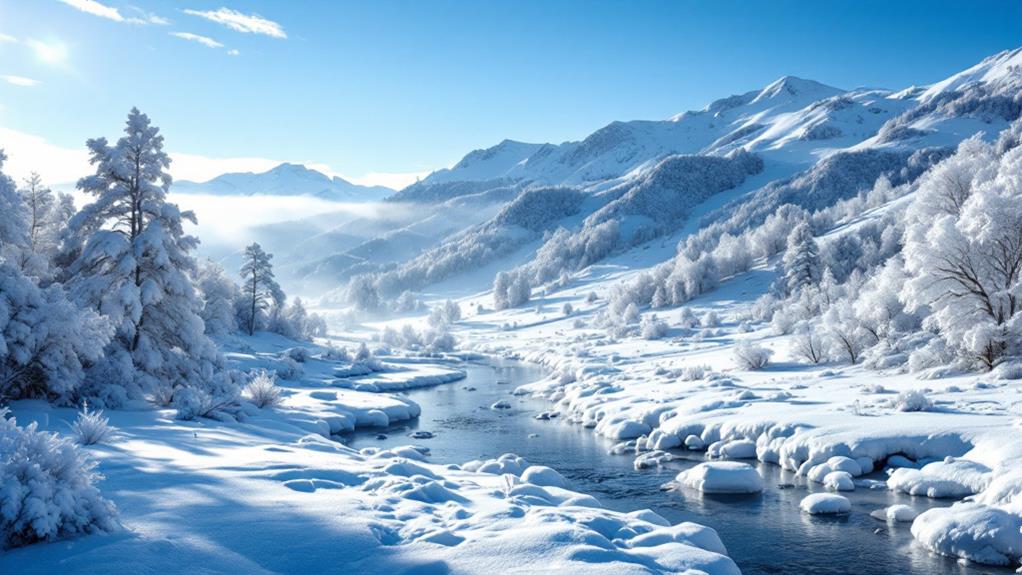
When exploring the coldest places in Australia, Tasmania often tops the list. Liawenee, a town in Tasmania, is recognized for its bone-chilling winter temperatures, sinking as low as 6.4°F (-14.2°C). It's not just Liawenee that experiences these freezing conditions; towns like Shannon and Miena also contribute to the state's reputation for harsh winter weather. These areas highlight why Tasmania is often the go-to example when discussing Australia's coldest regions.
Moving from Tasmania, you'll find Cooma in New South Wales, another contender for cold conditions. Despite being on the mainland, Cooma's winter temperatures can dip to about 15°F (-9.4°C), making it one of the cooler spots outside Tasmania. The southeast regions, including Victoria, round out the areas most likely to experience freezing temperatures during Australia's winter months.
Interestingly, while the southeast regions are noted for their cold, desert areas in Australia can surprise you with extreme nighttime lows, sometimes dropping to a staggering -26°F (-32.2°C). These temperature variations across the country showcase the diversity of Australia's climate, with each location offering a unique experience of winter's chill.
Alpine Snowfall and Skiing
As temperatures plunge, Australia's alpine regions transform into lively hubs for winter sports enthusiasts. In places like the Snowy Mountains and Victorian Alps, snowfall blankets the landscape, turning it into a winter wonderland. Resorts such as Thredbo and Perisher are at the heart of this transformation, boasting annual snowfall averages exceeding 2 meters (approximately 79 inches). This abundant snowfall, particularly during the peak month of July, makes these areas perfect for skiing and other winter sports.
You're likely to find temperatures in these alpine areas dropping to -14°C (6.8°F) or even lower at night. These chilly conditions are ideal for snow accumulation, ensuring a thrilling experience for skiers and snowboarders alike. From June to early October, the slopes come alive with visitors from across Australia and beyond, enthusiastic to carve through fresh powder.
In addition to skiing, the Snowy Mountains and Victorian Alps offer snowboarding and snowshoeing, providing a wide range of activities. The Australian ski season isn't just about the sports; it's also about the lively atmosphere, with events like the Snowy Mountains of Music Festival and numerous competitions adding to the excitement of your winter adventure.
Coastal City Winter Weather
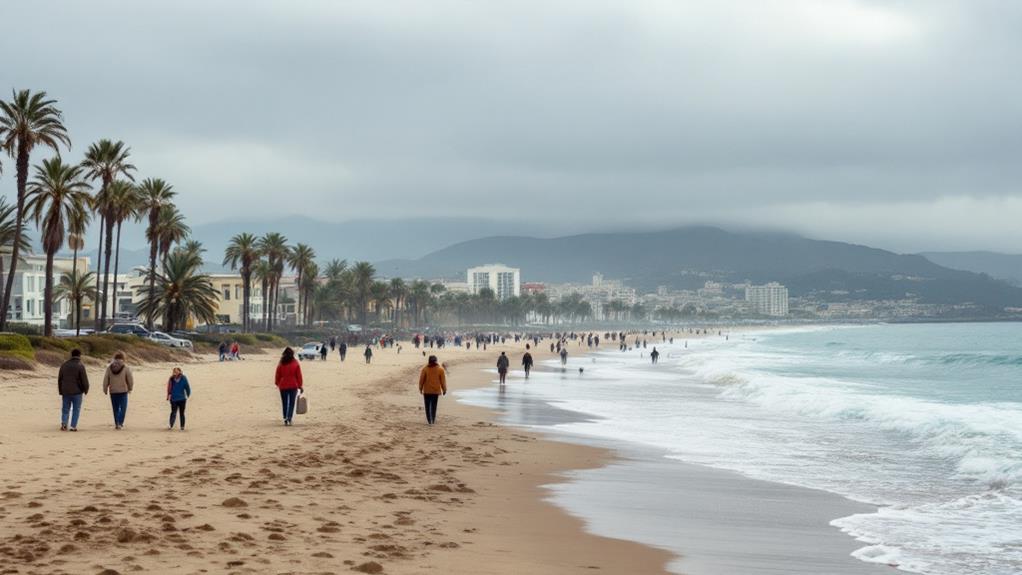
In coastal cities like Sydney, winter doesn't mean bundling up against harsh cold. Instead, you'll find a temperate climate where winter temperatures are quite mild. Sydney experiences maximum temperatures ranging from 17.7-18.4°C (63.9-65.1°F) and minimum temperatures between 8.1-8.6°C (46.6-47.5°F) from June to August. This makes it a comfortable period, especially if you're used to colder winters elsewhere.
Similarly, Melbourne offers a mild winter with maximum temperatures from 14.6-15.6°C (58.3-60.1°F) and minimums of 6.7-6.9°C (44.1-44.4°F). While slightly cooler than Sydney, it still retains that temperate charm. On the other hand, Brisbane enjoys even milder winters with maximum temperatures between 21.3-21.8°C (70.3-71.2°F) and minimums of 10.5-10.9°C (50.9-51.6°F), perfect for those who prefer warmer climates year-round.
Rainfall is another factor to take into account in these coastal cities. Sydney, for instance, receives an average rainfall of 113mm during winter, leading to mild and sometimes damp conditions. This balanced climate is why coastal regions remain popular winter destinations, offering you a respite from more extreme cold inland.
Northern Region Warm Winters
While coastal cities in the south like Sydney and Melbourne offer mild winter experiences, Australia's northern regions provide a completely different kind of winter warmth. When you visit places like Darwin and Cairns, you'll find winter temperatures ranging from 10.5°C (51°F) at night to about 30°C (86°F) during the day. This makes it perfect for those who enjoy warm days without the sweltering heat typical of summer months.
In the northern regions, winter coincides with the dry season. You'll appreciate the low humidity and clear skies, creating an ideal setting for outdoor activities and tourism. Unlike the southern regions that may experience much colder temperatures, these northern cities rarely see winter lows dropping below 10°C (50°F). This means you can leave your heavy coats at home and enjoy the comfortably cool nights.
If you're a beach enthusiast, the coastal areas like Broome are a haven during this time. With average daytime winter temperatures around 27°C (81°F), it's perfect for beachgoers and water sports lovers. So, regardless of whether you're exploring the Outback or lounging by the sea, the northern regions offer a unique winter warmth that's hard to beat.
Impact of Wind Chill
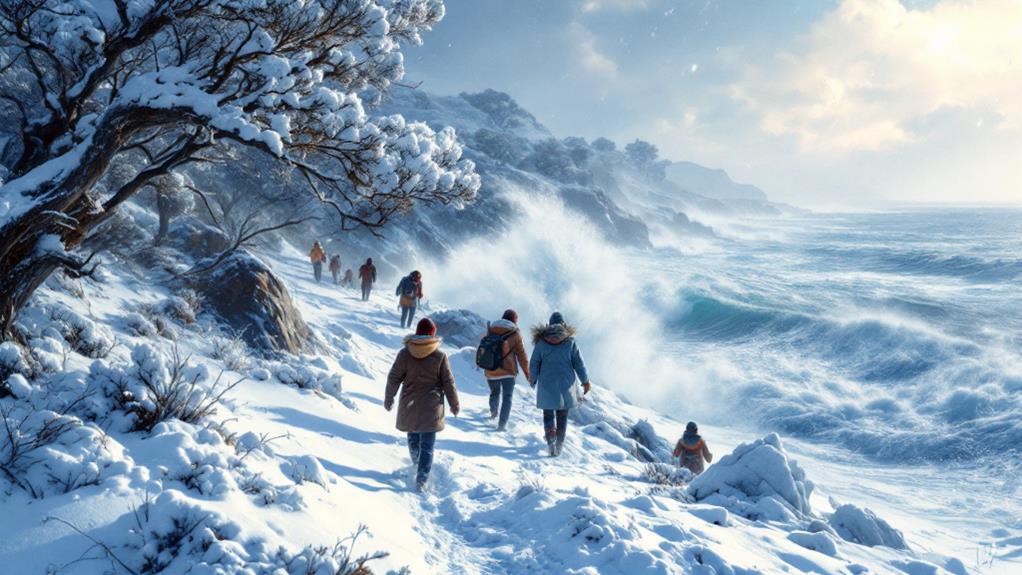
Wind chill can dramatically alter how cold you feel in Australia, often making it seem much colder than the thermometer suggests. This effect markedly impacts perceived temperatures, especially during the winter months. You might find that when the mercury reads between 5-20°C (41-68°F), it actually feels much colder due to wind chill. This happens because the wind increases heat loss from your body to the cooler air, intensifying the cold weather experience.
In cities like Melbourne and Sydney, the "feels like" temperature can be 3-6 degrees Celsius lower than the actual reading. The Bureau of Meteorology frequently reports these colder "feels like" temperatures, particularly on brisk winter mornings. This can catch you off guard, as the wind chill makes the air feel icier than you expected. You're not alone if you find winter mornings especially challenging, as many Australians attribute their discomfort not just to low temperatures but to the chilling effects of the wind.
During the coldest month, the sensation of cold weather is amplified by wind chill, making it crucial to dress appropriately. By understanding how wind chill affects perceived temperatures, you can better prepare for these unexpectedly chilly conditions.
Popular Winter Destinations
Despite the chilling effects of wind on Australia's winter mornings, there's no shortage of popular destinations that offer a different kind of cold-weather experience. If you're not a fan of the typical frosty winter, consider heading to the Great Barrier Reef, where winter temperatures hover between 25-30°C (77-86°F). It's perfect for snorkeling and diving, providing a warm escape from the usual chill.
Port Douglas, another gem, boasts family-friendly attractions and lively markets. With winter temperatures ranging from 14-26°C (57-79°F), you can wander comfortably without bundling up. The Whitsunday Islands also promise scenic hiking trails and energetic winter festivals, maintaining a pleasant 25°C (77°F) during the day.
For those who prefer their outdoor activities with a maritime twist, Ningaloo Reef in Exmouth offers fantastic whale watching and marine tours, with temperatures averaging 20-26°C (68-79°F).
If winter sports are more your style, head to New South Wales or Victoria. Resorts like Thredbo and Mount Buller provide a classic winter feel, with temperatures dropping to around -5°C (23°F) at night. These destinations guarantee that your Australian winter is anything but ordinary.
Seasonal Activities to Enjoy

Winter in Australia opens up a world of seasonal activities that you won't want to miss. If you're drawn to warmer temperatures, head to the Great Barrier Reef, where the mercury hovers around 26°C (79°F). It's perfect for snorkeling and diving, offering a splash of summer in the middle of winter. Coastal cities like Sydney and Brisbane boast milder climates, ranging from 10°C to 21°C (50°F to 70°F). Here, you can enjoy beach outings or partake in lively outdoor festivals that keep the spirit alive even in cooler months.
For those craving a winter wonderland, New South Wales and Victoria's ski resorts, like Thredbo and Perisher, are must-visits. Temperatures can dip to 0°C (32°F), setting the scene for thrilling skiing and snowboarding adventures. Meanwhile, Melbourne's Winter Night Market offers a cozy retreat with food stalls and crafts amid temperatures of 6°C to 14°C (43°F to 57°F).
If hiking is your passion, venture into the Great Otway National Park. With daytime temperatures between 10°C to 16°C (50°F to 61°F), you'll be captivated by stunning waterfalls and lush scenery, making hiking a rewarding winter activity.
Tips for Staying Warm
As you enjoy the diverse activities winter in Australia offers, it's imperative to stay warm and comfortable. Cold winters can be harsh, especially in places like Tasmania, where temperatures may drop to -14.2°C (6.4°F). Dressing in layers is vital to trap body heat, particularly when average winter temperatures in cities like Sydney can reach as low as 8.1°C (46.6°F). Invest in thermal wear to keep yourself cozy, even in the chilliest regions.
Protection from the elements is key. Use windproof and waterproof outer layers to shield yourself from biting winds that can make it feel 3-6°C colder. This is especially significant in Melbourne and Canberra, where drafts can easily penetrate. To guarantee your home stays warm, seal windows and doors against drafts; this is crucial when dealing with average winter temperatures ranging from 6.7°C (44.1°F) to 15.6°C (60.1°F) in Melbourne.
Additionally, staying hydrated is essential. Consume warm beverages to maintain your body temperature and prevent hypothermia, especially during freezing nights in areas like Cooma.
- Dress in layers: Trap body heat effectively.
- Invest in thermal wear: Important for colder climates.
- Use windproof and waterproof outer layers: Shield against cold winds.
- Stay hydrated: Warm beverages help maintain body temperature.

